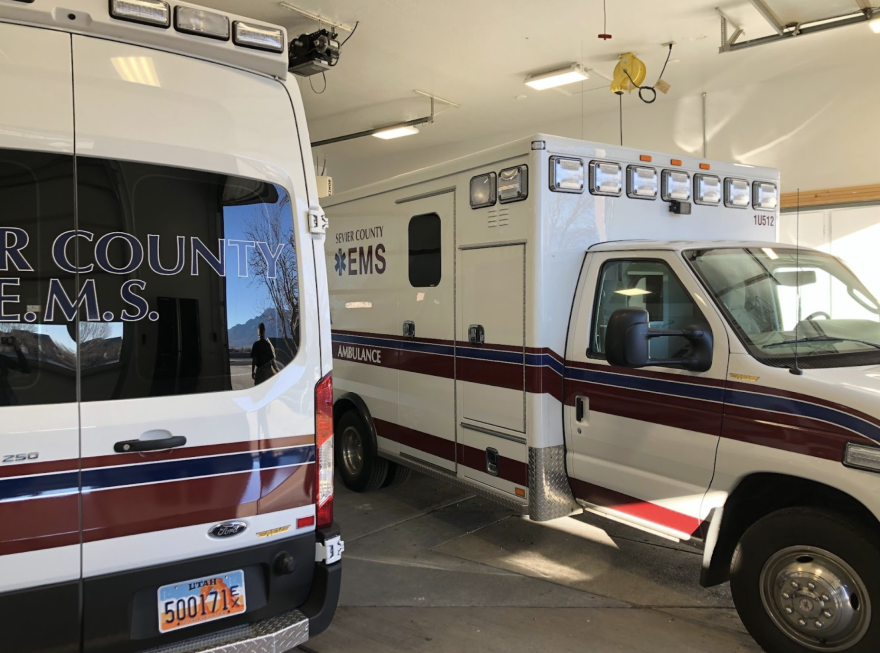Nina Pinette is from Grand Junction, Colorado. In late November, she stopped with some friends just outside Richfield, Utah to try out some biking trails.
“We were in St. George for the weekend and are on our way home and thought we'd check out a new trail system,” she said, standing next to her white van in a dirt parking lot near the freeway.
“We saw it online and also heard from a friend of ours that had ridden here,” she said. “A lot of the trails we’re used to back home are rockier, but we heard here maybe they're a little bit faster and flow-ier, which is also super fun.”
Pinette’s crew is an example of the people local officials say have “discovered” Sevier County and contributed to a boom in tourism. The draw is similar to most other destinations in Utah: outdoor activities.
County officials say they’ve been encouraging people to come visit in order to help diversify their economy since local coal mining could start decreasing in about 15 years.
But, that effort has put a strain on their search and rescue and emergency services resources.
A double-edged sword
A two-minute drive on a dirt road from the parking lot where Pinette stood is the start of a trail for another popular activity here: ATVs.
“There's a lot of beautiful trails that we have here in Sevier County and absolutely great scenery,” said Tooter Ogden, chair of the county commission. He stood a few feet away from the trailhead as dusk settled in and listed off what makes his county special.
“As you get going further up [the trail], you'll get into the pines and the Aspen. Right here you’ve got some beautiful white rock, Juniper [and] Pinyon.”
One of Sevier County Sheriff Nathan Curtis’s first law enforcement assignments was in search and rescue about 20 years ago. State data show the number of missions is now on average almost triple what it was back then.
“But the bigger thing we're seeing is there's more serious injuries,” Curtis said. “Not just your ‘Hey, little Johnny went out last night in his truck and got stuck in the snowdrift.’”
He said many of those injuries are connected to the events that promote tourism here, like a paragliding convention that now happens each year.
That's put a strain on his budget. The team gets reimbursed by the state for things like fuel and vehicle maintenance, but not for buying new equipment. Curtis said it’s starting to wear out more frequently now since they’re doing more rescues that require them to go further into the backcountry or more precarious areas.
“You use it so many times in a search and rescue environment where you're having to go out in the rain, in the snow and the bad weather and you're in the mud and you're dealing in all that stuff,” he said. “Eventually, motors wear out. … Then it becomes unsafe for your people.”
In the past 20 years, ambulance calls have also doubled, according to the county’s EMS director. Even though patients pay for that service, he said it’s still not enough to cover the additional wear and tear on their vehicles.

What’s next?
Curtis said where that extra money will come from in the future is contentious.
“A lot of taxpayers will say, ‘Well, they're not from our county. They're coming off the Wasatch front. Why should we have to pay for that?’” he said. “Well, we're promoting tourism, we're promoting our county and we want people to come here and spend. But at the same time, we want people to be safe, too.”
Ogden said they want more visitation to help the county’s economy, which has a big shift on the horizon. Right now, trucking and a coal mine are two of the main economic drivers.
“They've always said that they may not be mining as much,” he said. “We are concerned about some of that because they are a major tax base for Sevier County. And so we certainly are trying to find other things that will fill that void. … But I don't think that tourism would ever take the place of the oil industry or the coal mine or the trucking.”
Local officials are not looking to raise taxes any time soon — and hopefully never — to make up the difference. Ogden has been working at the state capitol to get outside money to help.
He said they used some federal pandemic relief money, but that’s not a good long term solution. So he and other rural officials are asking for ongoing state funding in the upcoming legislative session for emergency services across all counties.
“It'd be great if we could, you know, get $2, $3 million,” he said. “But if you look at that number and break that across the whole state, that's not very much money. So we'll take whatever we can get.”


